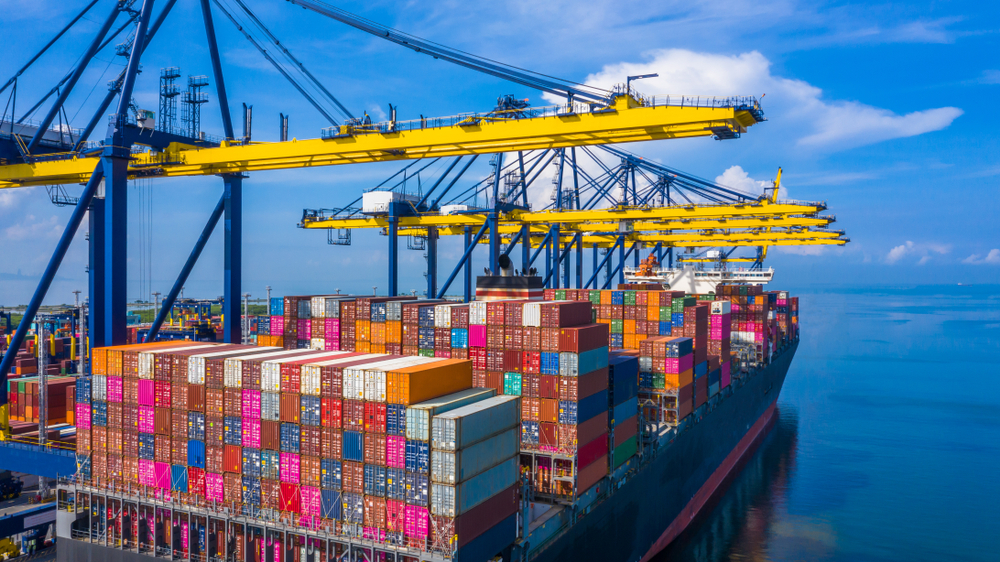Gati Shakti Scheme: A boost to infrastructure development
On 13th October 2021, the Government of India launched the ambitious PM Gati Shakti Scheme for multi-modal connectivity plan and coordinated planning and execution of projects, intending to augment infrastructure development in India. The government’s strong push to infrastructure through the Gati Shakti scheme provides a positive impetus for much-needed post-pandemic economic growth since the sector affects India’s competitiveness.
- Gati Shakti platform seeks to bring 16 ministries and departments including Railways, Road and Highways, Power, Gas, Telecom, etc. together for coordinated planning and implementation of infrastructure connectivity projects.
- The Prime Minister said that ‘work in progress’ which lacks trust, is a part of the old systems and practices and under this scheme, shall be replaced by today’s mantra of ‘work for progress’, ‘wealth for progress’, ‘plan for progress’ and ‘preferences for progress’.
- The plan focuses on breaking inter-ministerial silos that cause delays in project completion due to lack of advance information, lack of coordination, etc., and controls logistic costs, thereby striving to improve the competitiveness of Indian exports.
- Gati Shakti scheme has set targets for the year 2024-25 that include constructing national highways of 2 lakh km, decongesting 51% of the rail networks, and handling cargo of 1,600 million tonnes, adding 17,000 km to the gas pipeline network, etc.

Image credit: Shutterstock
In 2018, India was ranked 44th in the World Bank’s Logistics Performance Index. The report showed that the key issues affecting the overall performance of the sector (valued at US$ 200 billion) included gaps in infrastructure, a varied and silo-based legal and regulatory regime, disjointed IT systems, overdependence on road transport, suboptimal use of existing infrastructure due to suboptimal sharing of capacities, lack of skilled manpower, low predictability and visibility in supply chains resulting in heavier than necessary inventory costs and so on. The COVID-19 pandemic only highlighted the seriousness of this issue and the urgency to improve the sector’s performance.
Taking cognizance of this fact, in her Budget 2019 speech, Finance Minister Nirmala Sitharaman stressed the importance of robust physical connectivity in achieving the government’s vision of a US$ 5 trillion economy. More recently, PM Narendra Modi inaugurated the Rs 100-lakh crore Gati Shakti Scheme on 13th October 2021 for multi-modal connectivity, giving a boost to the Indian infrastructure sector. This National Master Plan is in synergy with the ₹111 lakh crore National Infrastructure Pipeline and multiple efforts to generate resources for it, including the National Monetization Pipeline and the Development Finance Institution (DFI). PM Modi stated that:
Just as JAM (Jan Dhan, Aadhar, Mobile) trinity revolutionised the access of government facilities to the people , PM Gati Shakti will do the same for the field of infrastructure.
The Gati Shakti Scheme
Gati Shakti is a step towards achieving the long-term goal of Atmanirbhar India. It is a GIS-based platform with as many as 600 layers, capturing all utilities and network linkages in various economic clusters. The digital platform intends to bring 16 ministries and departments including Railways, Road and Highways, Petroleum and Gas, Power, Telecom, Shipping, and Aviation, together for integrated planning and coordinated implementation of infrastructure connectivity projects. It plans on incorporating the infrastructure schemes of various ministries and state governments such as Bharatmala, UDAAN, inland waterways, dry/land ports, Economic Zones like textile clusters, defense corridors, electronic parks, fishing corridors, industrial corridors, pharmaceuticals clusters, and many more.
The scheme focuses on providing speed (Gati) and power (Shakti) by breaking the inter-ministerial silos that cause delays due to lack of coordination, lack of advance information, the wide gap between macro planning and micro implementation. This holds up infrastructure projects, drives up their costs, and causes wastage of budget. It not only intends to develop the work culture of completing projects within the stipulated time but also plans on completing them ahead of time.
The logistic costs account for about 13% of India’s GDP which is higher than developed countries. Due to the high logistical costs, the competitiveness of India’s exports decreases. The Gati Shakti scheme helps cut the logistic costs, increase cargo handling capacity at ports, and reduce turnaround time. This is expected to give a boost to India as an investment destination. Gati Shakti brings together government processes and its various stakeholders and integrates different modes of transportation, which is an extension to holistic governance.
As pointed out by the PM, the creation of quality infrastructure for sustainable development is imperative and it gives rise to several economic activities and creates employment opportunities on a large scale.
Gati Shakti’s Ambitious Targets
The PM Gati Shakti- National Master Plan has set up targets up to 2024-25 for all infrastructure ministries.
- The target for the Road Transport and Highway Ministry is having a National Highways of 2 lakh km, completion of 4 or 6 lane national highways of 5,590 km along with the coastal areas and all the state capitals in the northeast to be connected with 4-lane and 2-lane national highways.
- For Railways, the target is decongesting 51% of the rail network by completing additional lines and implementation of two Dedicated Freight Corridors (DFCs). In addition to this, it aims to handle 1,600 million tonnes of cargo by 2024-25 as compared to 1,210 million tonnes by 2020.
- It also aims to include 11 industrial corridors and two new defence corridors – one in Tamil Nadu and the other in Uttar Pradesh and achieve ₹ 1.7 lakh crore turnover in defence production.
- Building an additional 17,000 km long gas pipeline connecting major demand and supply centers for industries to double the gas pipeline network to 34,500 km.
- A total transmission network of 4.52 lakh circuit km in the power sector and the renewable energy capacity to 225 GW from 87.7 GW at present.
- In civil aviation, the target is to double the existing aviation footprint and create more than 200 new airports.
The development of quality infrastructure is possible only on the fulfillment of these ambitious targets and India shall be capable of realizing the dream of becoming the business capital of the world.
A robust infrastructure network is to an economy not only what arteries are to a living being but also the very bedrock for economic growth and prosperity. The government’s strong push to infrastructure through the Gati Shakti scheme provides a positive impetus for much-needed post-pandemic economic growth since the sector affects India’s competitiveness. This scheme is a multi-pronged strategy to address the various gaps in infrastructure and logistics. By ironing out wrinkles in execution, this initiative, if executed efficiently, could prove to be a cog in India’s wheel of world-class, seamless multi-modal infrastructure creation. States have a crucial role in the success of this initiative, owing to facets like port linkages and land availability for highways, railways, industrial clusters and corridors depend on political consensus and active partnership.













Leave a comment